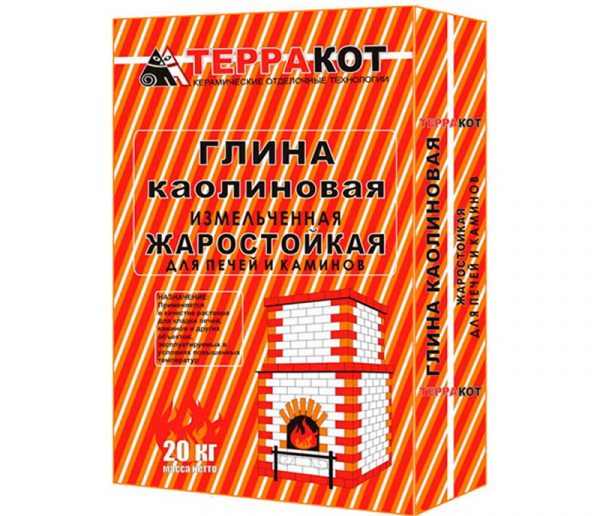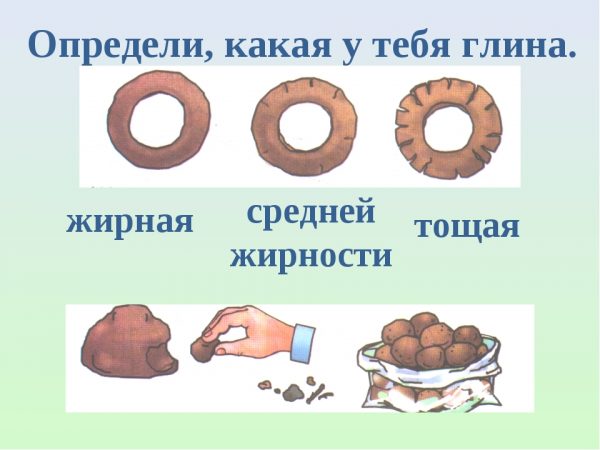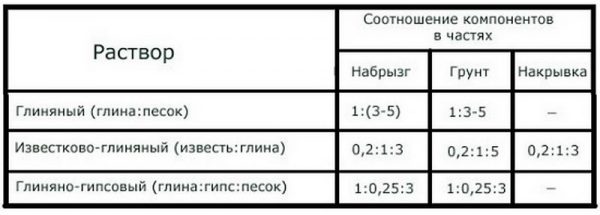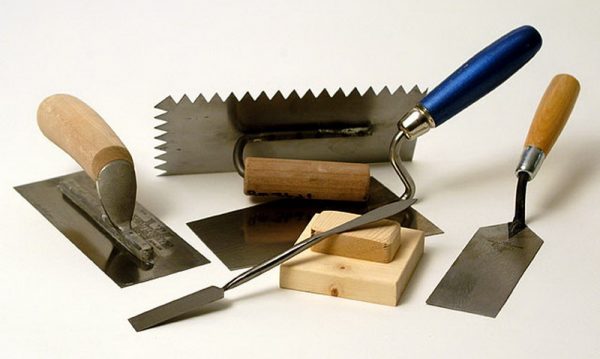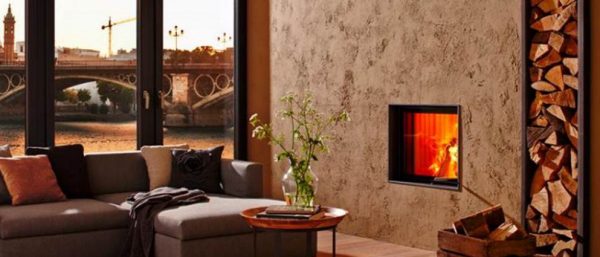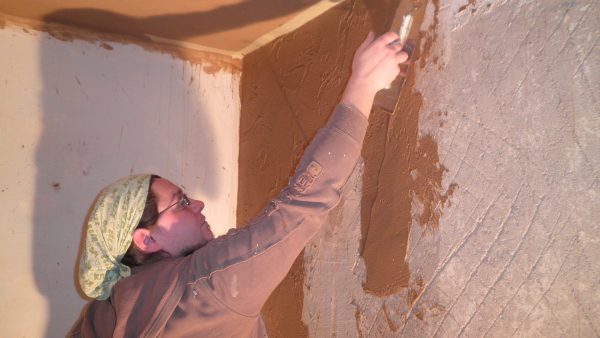Thanks to modern technology, many building materials are produced containing durable polymer components. But not all of them are 100% clean and environmentally friendly, so often people tend to decorate houses and apartments with harmless means without toxic substances.
- Types of clay-based plasters
- Advantages and disadvantages of formulations
- Stucco clay
- Fat and its definition
- Preparation of fine clay
- Composition of clay plaster
- Clay-sand mortar
- Sawdust solution
- Instructions for applying plaster
- Foundation preparation
- Tools and materials
- Plastering
- Decorative clay plaster
- Clay plaster repair
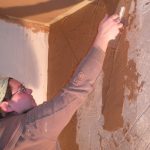
Clay plaster has been used by mankind since the Neolithic, and its foundation - clay - is completely natural, nature itself gives it.
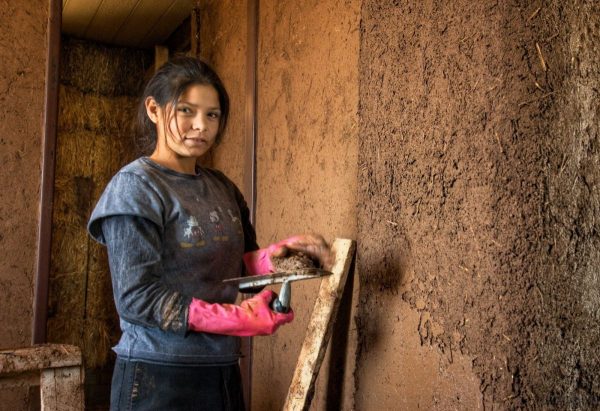
Types of clay-based plasters
Clay is a natural highly plastic material that is widely distributed throughout the world. On its basis, a variety of building mixtures are prepared, in which clay can be the main component or adjacent to other minerals, serve as a plasticizing additive.
Depending on the origin of the clay, the properties of the finished plaster change. Building mixtures are made on these types of clay:
- monomineral - obtained as a result of the decomposition of one mineral (for example, kaolin appears when feldspar decays);
- polymineral - occurs when several minerals are decomposed.
The color of the plaster will also depend on the clay, more precisely, on its shade. For the manufacture of mixtures used white, red, yellow, black, rarely blue clay. By type of plaster filler there are:
- clay-lime;
- clay-cement;
- gypsum-clay;
- clay-acrylic.
Sand or sawdust can act as additives to clay in a stucco mixture, less often straw, fibers and polymer granules, fiber, polystyrene foam crumb, needles, which can enhance the strength of the composition. By designation, the material can be ordinary (leveling) and decorative, in terms of fat content - heavy (ductility over 0.27) and thin (ductility - 0.17-0.27).
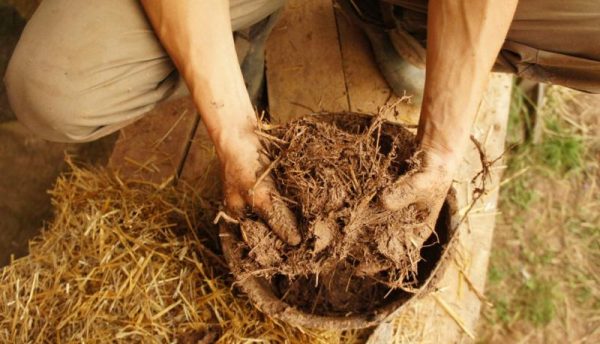
Advantages and disadvantages of formulations
The popularity of clay plasters is due to their low price, because the cost of the initial components is small. They are environmentally friendly, since the composition includes only natural components that do not cause allergies and do not bring other harm. Also, the advantages of clay plaster include:
- optimal thermal conductivity;
- moisture capacity, the ability to create a comfortable microclimate in the house;
- maintainability, easy replacement of the damaged area of the coating;
- strength and durability (subject to the rules of operation);
- the possibility of finishing furnaces, chimneys, fireplaces;
- fire safety, incombustibility;
- lack of insects and pests;
- non-waste - the remnants of the plaster can go into action at any time;
- easy application due to high ductility;
- filling cracks, holes, creating any texture;
- suitability for the majority of building bases, including for a tree.
The disadvantages of clay plaster include its advantage - moisture capacity. The fact is that in too humid rooms, the plaster layer begins to gradually become saturated with water vapor, as a result, the operational characteristics of the material change.
In direct contact with water, the surface swells, soaks, which adversely affects the strength, durability of the plaster, causes its shrinkage. Among other things, the clay solution gains strength and completely dries out in 2 months, which is a very long time. When applied too thick, the risk of cracking and snapping off is high.
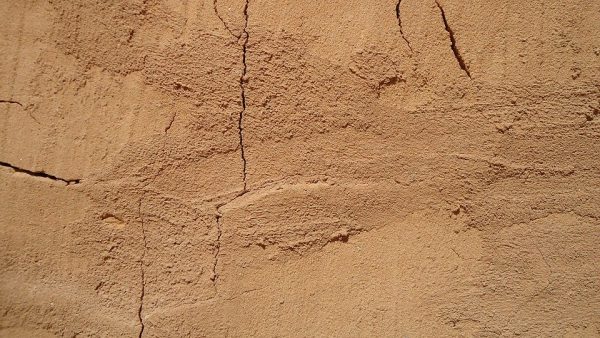
Stucco clay
When choosing clay for plastering, you need to pay attention to fat content, plasticity, the degree of contamination with foreign substances. Too thin clay for plastering is usually not used. Too heavy (with a ductility in excess of 0.27) is also undesirable for use, as it often cracks over time. Material with increased radioactivity is completely unsuitable for work, although such deposits are not common.
to contents ↑Fat and its definition
Fatty clay contains a significant proportion of clay and silt particles, while lean, on the contrary, has more sand. The fat content has to be determined in practice so as not to make a mistake when preparing the plaster. They do it this way:
- a ball with a diameter of about 3 cm is rolled from each material sample;
- throw each ball from a height of 1 meter so that it hits a rigid base;
- they evaluate the state of the ball after a fall: if the clay is oily, it is flattened very much, and the skinny one is crumbled into pieces.
The clay in which the ball is not very flattened and almost does not fall apart is best suited for the manufacture of plaster - it has normal (medium) fat content. There is another method for determining the fat index. Similar clay balls are flattened with fingers up to ½ of the original height. If the material is suitable for plaster, small cracks appear at the edges of the ball. In oily clay, they are completely absent, while in skinny clay they become deep.
The size and number of cracks can also be estimated by rolling balls into strips up to 20 cm long, which wrap around the handle of a garden tool. A small number of small cracks indicates that clay should be taken for the manufacture of plaster. Clarify the quality of the selected material in this way:
- moistened with water trowels;
- combine clay with sand in the right proportion;
- gain solution on the trowel;
- turning the tool down to allow the solution to slide;
- a greasy solution will leave a lot of buildup, a skinny one will slip without a trace, and only narrow stripes will appear from the normal one.
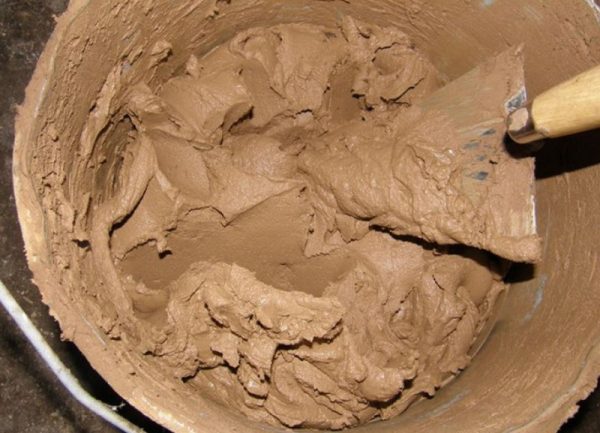
Preparation of fine clay
The mineral material may be highly ductile, ductile, moderately ductile, low ductility and non-ductile. In addition to the exact mineral composition, a specific indicator is determined by the size of the fraction of particles that are present in it - the finer they are, the higher the ductility.
To obtain fine clay, they use this method: the finished material is laid out with a shaft up to 1 meter high on a flat surface, moistened, left for the whole winter. After freezing and thawing, the clay becomes loose and is well suited for decorative purposes.
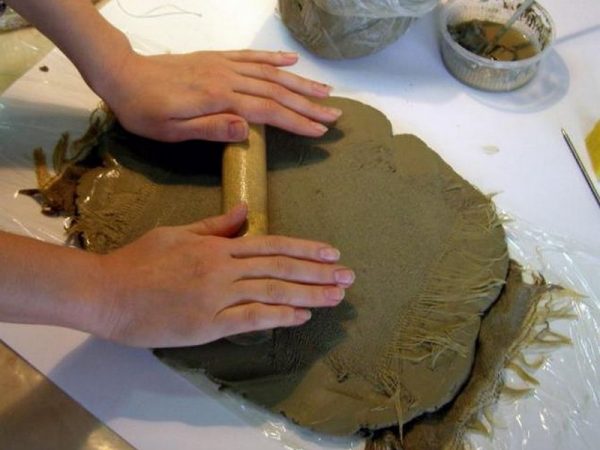
Composition of clay plaster
Typically, the plaster consists of clay and sand or includes sawdust, but with the exception of the sand component. Also, if desired, flax fibers, needles, dolomite, cellulose, quartz or other components are introduced into the finished mixture, which help to improve the heat-insulating properties of the plaster.
Clay-sand mortar
The simplest type of solution is the combination of clay and sand in a ratio of 1: 2 - 1: 5. The sand must be sieved, the clay is cleaned of impurities. The order of work will be as follows:
- clay is poured with water for a day;
- the liquid is drained, the substance is broken with a construction mixer, until its consistency resembles sour cream;
- sifted sand is poured into the mass in portions, stirring regularly;
- add fillers and water in the right amount;
- the solution is again whipped with a construction mixer to make it look like a sufficiently thick paste.
The readiness of the plaster is checked according to the principle of determining the fat content. Roll up the ball, flatten it. If the edges cracked a lot, there is too much sand in the plaster (clay is also added). When the ball spreads, excess water is added (it is necessary to flavor the mass with clay and sand). To improve the properties of plaster, urea, magnetite, calcite, sodium gluconate are often added to it.
to contents ↑Sawdust solution
Another type of clay mortar includes sawdust instead of sand. It is more difficult to work, but when applied to the walls it works as a reliable thermal insulation, moreover, it is much stronger than clay-sand. The mass quickly loses elasticity, and will have to work more actively, but after drying it is not afraid of damage.
Before mixing the components, the sawdust is soaked with water - so they will not draw moisture from the plaster. After they connect clay and sawdust in the same proportions that are applicable for sand plaster. This composition is not used for finishing cladding due to surface roughness.
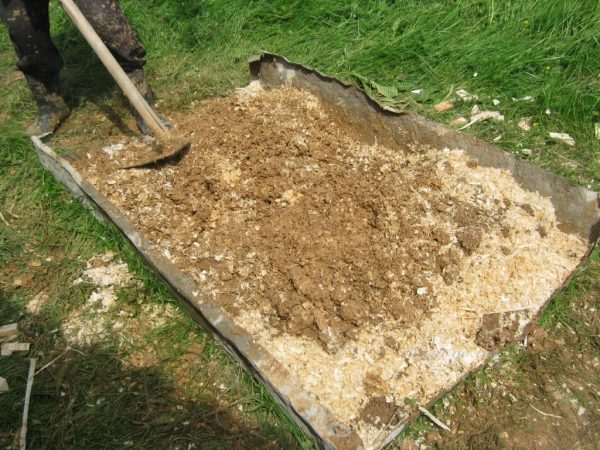
Instructions for applying plaster
Plastering the walls includes preparing the base, applying mortar and decorative surface treatment. The whole process is carried out at a temperature within + 5 ... + 30 degrees and humidity below 80%.
Foundation preparation
The working surface must be well prepared for plastering. It is cleaned of the old coating (wallpaper, paint), exfoliated pieces, dust and dirt, efflorescence, foci of biodefeat. Grease stains with a solvent wipe. Cracks are embroidered, as well as seams in masonry - they deepen, expand, the largest defects are covered with cement mortar.
The base should have a roughness, which will improve adhesion to the plaster. On wooden walls you can nail shingles, small cloves, on brick and concrete - attach fiberglass mesh with dowels. Porous walls must be primed, otherwise they will quickly absorb liquid from the solution. After applying the soil, the surface is dried for 2 hours.
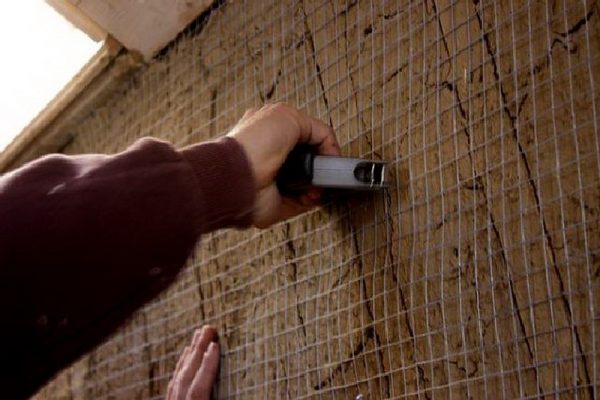
Tools and materials
To prepare the mortar and plastering, such tools and devices will be required:
- a bucket for mixing plaster;
- shovel for loading components;
- measured capacity;
- sieve for sifting sand;
- rule and level;
- grater or grater;
- spatulas of different sizes;
- construction mixer.
Plastering
After mixing the plaster, they immediately begin to apply it. The surface is sprayed with water, a first layer of material is applied. Usually it is applied to the wall with a spatula or a bucket or simply thrown with your hands, and then smoothed with a grater, a trowel. This layer can be 1-2.5 cm, and with a thickness in excess of 1-1.5 cm, mandatory preliminary reinforcement is required.
If you plan to perform the second layer of plaster, the first is leveled without much care. Let it dry for several days or even weeks. The second layer is applied on beacons or level, and a little cement is added to the plaster. The mass is leveled, rubbed with a construction grater, removing even small defects (if it is planned to stain or wallpaper).
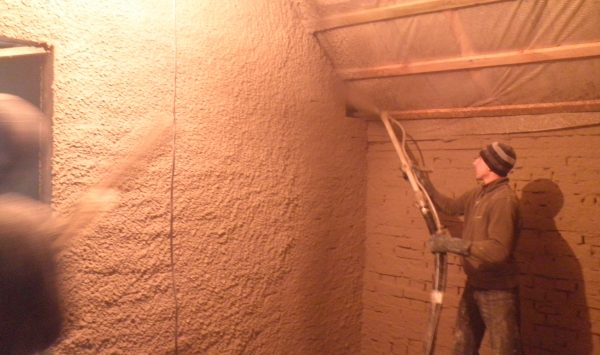
to contents ↑To finish it for a long time, it is protected from moisture. To do this, the plaster is covered with a thin layer of cement mixture, latex or other water-repellent paint, whitewash.
Decorative clay plaster
Clay is often used in creativity and for finishing. It is plastic, so it allows you to create any shape and decoration. After drawing on the walls, figured rollers, various stencils and stamps are used, sections of different colors are combined.
to contents ↑Clay plaster repair
Old clay trim may begin to crumble. It often happens that old walls have significant defects and require leveling. On the damaged area, remove the layer of material, tap and remove other exfoliated pieces. They wash off the whitewash, close the deep depressions, and cut off the protrusions. The coating is abundantly moistened with water, a layer of clay plaster is applied, evenly distributing it with a spatula. If the walls have sharp changes and large flaws, cover them with drywall.
Clay plaster is a natural and comfortable material. It allows you to get a cozy, stylish coating that will fill the house with a natural atmosphere and will last for many years.

